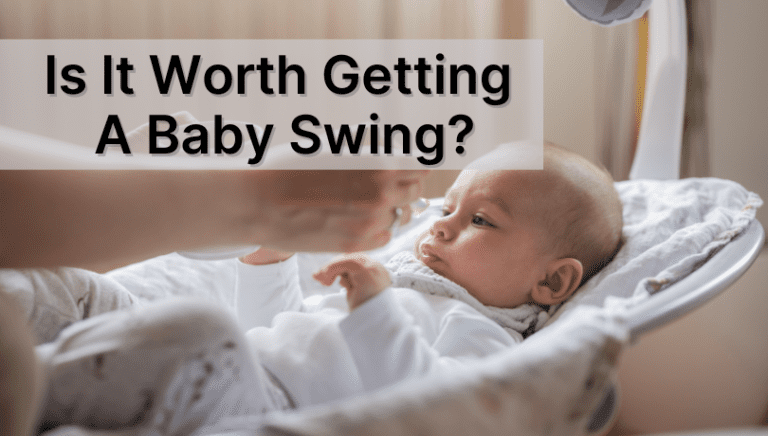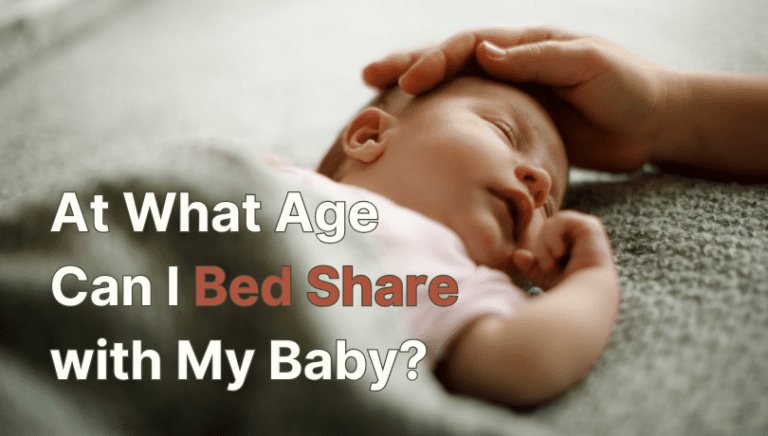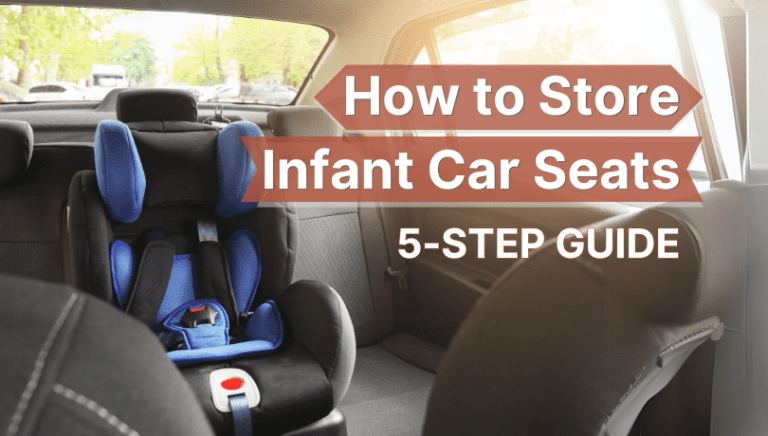When to Transition from Crib to Toddler Bed: 7 Key Tips
I remember when Avery asked me with her cute little please for a toddler bed and even though she’s a proper teenager now, the memory is still very vivid in my mind!
At the time, she was 2.5 years old and her movements were also a little too much for a crib. So, when she asked me about toddler beds, I decided it might be time for a big switch. Also, switching to a toddler bed from a crib is not easy, especially for new parents (It’s even harder than transitioning to a crib).
But the good news is that you have help! In this guide, I’ve included some practical ways to switch your kiddo to a toddler bed and I also mention the dos and don’ts of when to transition from a crib to a bed.
Table of Contents

When Should You Transition from a Crib to a Toddler Bed?
Your little one can show readiness for a toddler bed between 18 months and 3.5 years of age. I know this is a huge variation, and you must think, how can I track the right time for my baby to switch from crib to bed?
So, to clear your doubts (to some extent), I’m sharing some major signs that can help you determine the perfect time for this transition.
1. Baby Keeps Trying to Climb Out of the Crib
The most common and obvious sign is when your kiddo becomes a ninja and can’t control throwing themselves over the crib to get their tiny self out. Not only is this a safety hazard, but it will also keep you and your partner awake while you take turns ensuring your baby stays secure in the crib.
And let me tell you, climbing out of a crib can happen at any age after your baby shows more mobility (which means more sleepless nights!)
- One of my friends shared her experience with her son: “Our son (Jeremy) was only 14 months old when we found him dangling over the crib rails even though the crib was kept in the lowest position.”
- So whenever you see your baby practicing their ninja moves in a crib, even after including a sleep sack and keeping the crib in the corner (which blocks two sides of the crib and minimizes chances of getting out), I suggest you switch to bed ASAP.
Related Article: How to Protect Baby from Hitting Head in the Crib?
Kelleigh’s Quick Tip: I’d also encourage you to try this tip that I found valuable when my last born (Theo) gained mobility. Turn the crib to the other side, as some cribs have size differences in the front and back. This tip might allow you more time to explore other options (as it did for me).
2. Baby is Almost 3 Feet Tall
If your bundle of joy is 3 feet tall or feels heavier when you try to pick them up, you should start thinking about the crib-to-bed transition. You can consider the transition in the following cases too:
- When your baby reaches the crib’s weight limit (35 to 50 pounds) or the crib’s height limit (3 feet) or
- When your baby’s chest is above the crib rails (while standing) even in the lowest mattress position!
There’s no point in delaying the transition at this stage because there’s a high chance of severe safety risks for your child.
Also Read: When to Lower Crib Mattresses?
3. Baby Wants to Switch to the Bed
Toddlers love to explore, and once they put their tiny eyes on something, they have to have it (even if it’s a bed!). In my case, Avery kept asking me, “When can I have a big princess bed, momma?” which she saw in my niece’s room.
- Fortunately, her age was also perfect for the transition then, so I took this as a cue to make a switch (Plus, I got a steal deal on the princess bed she wanted!)
- So, if they are the right age, and they’ve been watching older siblings sleep on a big bed, they’ll naturally want to transition and you can consider making the switch.
Kelleigh’s Safety Tip: If your baby continues to be naughty or lacks good behavior, transitioning to a bed from a crib is never a safe option, regardless of how willing they seem.

When Not to Transition from a Crib to a Toddler Bed?
Do Not Transition Your Baby to Bed if:
1. A New Sibling is on the Way
- Switching your little one to bed if you’re expecting another baby is not an option, especially if your baby is still too young and not ready for a big sleeping space.
- Not only does it make your baby feel left out and disturbed, but it also opens doors to accidents.
Instead of moving your baby to a bed, I suggest you borrow or buy a bassinet that you can use for your newborn, at least for the first six months (if you don’t have room for another crib in your room).
2. You Want to Improve Their Sleep
You may have heard people say that if your baby is not sleeping well in a crib, switch them to a toddler bed for magically sound sleep. That’s not always a strong enough reason to switch them to a bed, though.
- There might be a valid reason your child is not getting enough shut-eye in a crib. He/she might be tired, scared, hungry, or need a diaper change. That doesn’t mean you switch them to a bed.
- My son, Aiden, had a hard time sleeping in his crib because the bedding was uncomfortable, nothing else. So, please consider all your options before making these changes.
Recommended Reading: How to Make Crib Mattress More Comfortable?
3. Your Baby is Already Going Through Other Considerable Changes
- Please do not make the transition to bed if your little one is already in the middle of a big change, such as potty training, getting used to daycare or a nanny, or switching to a new house. This can harm your child’s mind, making them lose their sleep.
Babies are not fans of change, just like us adults. We creatures of habit take a lot of time to venture out of our comfort zones. So, give them their time and space.

7 Tips on How to Transition from Crib to Toddler Bed
Now that we know about the signs and false alarms of transitioning from a crib to a toddler bed, let’s talk about how you can smooth up this switching process!
1. Involve your Kid in the Process
The most helpful way to smoothly move your little munchkin to bed is to involve them in this milestone. Start by preparing them for the transition, such as reading books on the transition to bed or talking to them about it.
- You can also involve your baby in setting up the bed by asking them to choose bedding, a comforter, stuffed animals, and even the shape of a bed.
In short, prioritize their choice because that will get them excited.
2. Toddler-Proof the Space
An independent sleeping space can cause you to worry about your baby’s safety.
- You can set up the room by baby-proofing the drawers and edging nooks. Cover the electric sockets, and remove any dangling decorations and cords from the curtains.
- Keep the furniture by the wall, place the bed against the wall (without anything above it), and have enough space on either side of the bed so it doesn’t feel stuck.
- Close the windows, place a soft rug or cushions beside the bed to protect your child in case they fall, and don’t close the door to their room.
You can also invest in a nanny cam or baby monitor to get notified about movements in your baby’s room.
3. Be Consistent with Their Bedtime Routine
Make sure your child follows the same bedtime routine as when they slept in the crib. You’ve also got to make sure you are confident and happy to make the switch.
- Because your baby mimics your state of mind, avoid showing signs of worry or anxiety. Instead, keep a smile on your face, say soothing words, sing them a lullaby, and kiss them before you put them to sleep.
4. Communicate
Communication plays an important role. Once you decide it’s time to transition your little one to bed, talk it out with them and explain why you are moving them to bed.
This will encourage them and get them excited about the transition.
5. Choosing the Right Bed
Choosing a bed, whether a convertible one or a simple toddler bed, can be challenging, especially since too many options are available.
- Pick a sturdy bed backed by safety guidelines, with guardrails and an easy-to-follow assembling process to ensure your baby’s safety.
And, if you don’t want to worry about switching your child to a new sleeping space, a convertible crib is a viable option, as it transforms into a toddler bed.
6. Be Patient
Your little one is used to sleeping in a crib, so there will surely be some resistance and sleepless nights (for both of you) once you switch them to bed (at least for a few days).
- The best way to ease through this transition is to be patient and encourage your baby to get used to the bed’s setting.
- Let them have play sessions to help them get used to the feel of their new sleeping space, and give them hugs and kisses before leaving them for sleep.
7. Have a Plan B
If your baby still isn’t developing a connection with their new sleeping space even after trying for a while, switch them back. And please ensure you have this plan B in place beforehand.
- Revert them to their crib for a few days or weeks, while continuing to sleep-train them in bed in the daytime. Once they get enough training, try switching them to toddler bed again.
FAQs Related to Transitioning to Toddler Bed
1. What is the Maximum Age for a Toddler Bed?
4 years is the maximum age for a toddler bed. Once your child is 5 years old, they will most probably require a kid’s bed.
2. Can Toddlers Transition to a Queen Bed?
If your baby needs more space and wants you to comfort them in case they get scared or need your company, then a double bed is a suitable option.
Moreover, some families prefer skipping toddler beds and switching directly to adult-size beds to avoid changing them repeatedly.
3. Can You Use a Sleep Sack In a Toddler Bed?
Yes, you can use them to keep your baby in place if they’re trying to escape the bed. Other toddlers, like my daughter, Fiona, get used to sleeping with a sleep sack. So, it’s okay if your little one wants it in their bed.
Final Thoughts: From Crib to Toddler Beds
As a parent, regardless of when you decide to make the switch from crib to toddler bed, please ensure your baby isn’t going through any big change and that they behave well to avoid safety hazards.
And remember to stay patient with your baby, as they get used to sleeping in bed.






